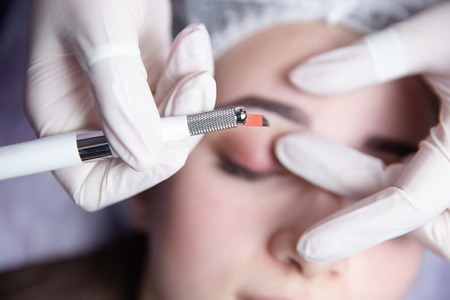Introduction to Aesthetic Treatments and Longevity
The world of aesthetic treatments has witnessed remarkable growth in the UK, with an ever-increasing number of individuals seeking non-surgical solutions to enhance their appearance. From dermal fillers and anti-wrinkle injections to skin rejuvenation therapies and laser procedures, these interventions have become integral to many people’s beauty routines. However, as the popularity of such treatments continues to rise, so too does the demand for clear, honest information regarding how long the results actually last. Patients are no longer satisfied with vague assurances; they want concrete facts about whether a treatment will deliver permanent changes or simply provide a temporary improvement. This quest for transparency is shaping conversations between practitioners and clients across the country, making it more important than ever to distinguish between lasting outcomes and short-term fixes within the ever-evolving landscape of aesthetic medicine.
2. Understanding Permanent vs Temporary Results
When considering aesthetic treatments in the UK, it is essential to distinguish between what truly qualifies as a ‘permanent’ result and what is better described as a ‘temporary’ fix. This differentiation not only shapes patient expectations but also aligns with British regulatory guidance and clinical practice.
Defining ‘Permanent’ and ‘Temporary’ in Aesthetics
In the context of cosmetic procedures, a ‘permanent’ result generally refers to an outcome that remains stable without significant regression over time, even as natural ageing processes continue. Conversely, a ‘temporary’ fix denotes results that diminish or disappear within a defined period, often necessitating regular maintenance or repeat treatments. However, the term ‘permanent’ can be nuanced—no intervention can fully halt the effects of time and lifestyle factors on the skin and underlying tissues.
British Regulatory Standards
The Care Quality Commission (CQC) and other UK regulatory bodies require practitioners to use clear terminology in patient communications and advertising. Treatments such as surgical facelifts or hair transplants may be marketed as permanent because their effects are long-lasting, though not immune to natural changes. Non-surgical interventions like dermal fillers or anti-wrinkle injections are categorically temporary under British regulations, with defined durations for effect.
Comparing Permanent and Temporary Treatments
| Treatment Type | Example Procedures | Typical Longevity | Patient Considerations (UK) |
|---|---|---|---|
| Permanently Altering | Surgical facelift, rhinoplasty, hair transplant | Years to lifetime (subject to ageing) | One-off procedure, higher cost, longer recovery; CQC-regulated |
| Temporary Enhancement | Botox (anti-wrinkle), dermal fillers, chemical peels | 3–18 months on average | Repeat sessions needed; minimal downtime; usually less invasive |
Patient Expectations in the UK Context
British patients increasingly value transparency regarding how long results will last, total cost of maintaining results over time, and realistic outcomes. Clinics are obliged by Advertising Standards Authority (ASA) guidelines to avoid misleading claims about permanence. As such, consultations should clarify whether a treatment offers permanent change or requires ongoing commitment for maintenance.

3. Common Temporary Aesthetic Treatments in the UK
When considering whether to opt for a permanent solution or a temporary fix, it is essential to understand the most popular minimally invasive aesthetic treatments available across the UK. Many individuals seeking subtle yet effective enhancements often turn to non-surgical options that deliver noticeable results with minimal downtime. Below, we explore three of the most sought-after temporary treatments: Botox, dermal fillers, and thread lifts.
Botox: The Go-To for Smoothing Lines
Botulinum toxin injections, commonly known as Botox, are among the most frequently requested aesthetic procedures in Britain. Botox works by relaxing targeted facial muscles, thereby reducing the appearance of dynamic wrinkles such as crow’s feet and frown lines. While widely celebrated for its rapid results and relatively low risk, it is important to note that the effects are temporary—typically lasting around three to four months. Factors such as individual metabolism, lifestyle habits (like smoking and sun exposure), and dosage all play a role in how long the results persist. Regular maintenance sessions are required to sustain a smooth and youthful appearance.
Dermal Fillers: Restoring Volume and Contour
Dermal fillers—primarily composed of hyaluronic acid—are another cornerstone of non-permanent facial rejuvenation in the UK. These injectable gels restore lost volume, enhance lips, and sculpt facial contours with immediate effect. The longevity of dermal fillers varies depending on the product used, the treatment area, and the patient’s unique physiology. Typically, results can last between six and eighteen months before gradual absorption occurs. Factors such as physical activity levels and metabolic rate can influence how quickly fillers break down.
Thread Lifts: A Subtle Lift Without Surgery
For those seeking a more lifted appearance without committing to surgery, thread lifts have gained popularity in recent years. This technique involves inserting dissolvable threads beneath the skin to gently lift sagging tissue and stimulate collagen production. Thread lifts offer immediate improvement with progressive enhancement over time as new collagen forms around the threads. However, these effects are not permanent; most patients enjoy results for approximately twelve to eighteen months before a repeat procedure may be necessary. The longevity of thread lifts depends on factors including skin quality, age, and aftercare practices.
Key Considerations for Longevity
While these temporary treatments provide flexible solutions tailored to individual goals and lifestyles, their impermanence is both a benefit and a limitation. Patients can trial different looks without long-term commitment but should plan for ongoing treatments if they wish to maintain their desired results. Understanding what each option offers—and recognising that outcomes vary due to personal health factors—empowers individuals across the UK to make informed decisions about their aesthetic journey.
4. Permanent Solutions: What Does ‘Permanent’ Really Mean?
When it comes to aesthetic treatments, the term ‘permanent’ is often used to describe surgical interventions and certain advanced technologies. However, it is crucial for British patients to understand what ‘permanent’ truly means within the context of cosmetic procedures. Surgical treatments such as rhinoplasty (nose reshaping), facelifts, and even laser hair removal are frequently marketed as offering lasting results, but permanence can be subjective and influenced by individual factors.
Clarifying the Permanence of Common Surgical Treatments
While surgical procedures are designed to deliver results that endure far longer than non-surgical alternatives, they are not necessarily immune to the effects of time or natural ageing. The table below outlines what you might expect in terms of longevity from popular permanent solutions:
| Treatment | Expected Longevity | Factors Influencing Results |
|---|---|---|
| Rhinoplasty | Largely permanent; minor changes may occur over decades | Natural ageing, trauma, healing response |
| Facelift | 5–15 years; ageing continues post-procedure | Lifestyle, genetics, skin quality, sun exposure |
| Laser Hair Removal | Permanently reduces hair growth; maintenance sessions may be needed | Hormonal changes, hair colour/type, number of sessions completed |
The Realistic Expectations for British Patients
For patients in the UK, understanding these nuances helps set realistic expectations. While a surgical rhinoplasty will permanently change the structure of your nose, subtle shifts due to cartilage movement or ageing are possible. Facelifts provide a significant rejuvenation but cannot halt the natural ageing process—skin will continue to lose elasticity over time. Even laser hair removal, despite its reputation for permanence, often requires occasional top-up sessions as some follicles can reactivate due to hormonal fluctuations.
The Impact of Lifestyle and Aftercare
British patients should also consider how lifestyle choices and diligent aftercare play a role in prolonging results. Factors such as sun protection (especially important given the unpredictable British weather), smoking status, and adherence to post-operative instructions all influence how long ‘permanent’ results truly last.
Summary Table: Are These Solutions Truly Permanent?
| Surgical Solution | Permanence Level* | Maintenance Required? |
|---|---|---|
| Rhinoplasty | High (structural changes) | No routine maintenance, but protection from injury advised |
| Facelift | Moderate (visible ageing resumes) | No formal maintenance; skin care recommended |
| Laser Hair Removal | Moderate-High (hair reduction) | Occasional top-up sessions for best results |
*‘Permanence Level’ reflects structural or functional durability rather than absolute immutability.
5. Factors Affecting Longevity of Results
When considering whether an aesthetic treatment offers a permanent result or merely a temporary fix, it’s crucial to recognise the variety of factors that influence how long results truly last. Understanding these can help manage expectations and tailor aftercare routines for optimal outcomes, especially within the unique context of British lifestyles and environmental conditions.
Individual Differences: Lifestyle and Genetics
The longevity of aesthetic treatments is highly individualised. Lifestyle choices play a significant role; for instance, individuals who smoke or consume excessive alcohol may notice their results diminish more rapidly due to impaired skin health and healing. Additionally, genetics set the baseline for how your body responds—some people naturally metabolise dermal fillers faster, while others might retain surgical results longer owing to differences in skin elasticity and collagen production.
Aftercare: Maximising Your Investment
Proper aftercare is essential in prolonging the effects of any cosmetic intervention. Following practitioner advice—such as avoiding sun exposure, adhering to prescribed skincare regimens, and scheduling maintenance appointments—can make a marked difference. In the UK, where weather can be unpredictable, using sunscreen year-round and protecting skin from harsh winds becomes particularly relevant.
Environmental Factors: The UK Climate
The British climate presents unique challenges. Frequent rain and humidity can affect skin barrier function, while the lack of consistent sunlight means vitamin D levels may be lower, potentially slowing post-procedural healing. Conversely, those rare sunny spells can tempt us to skip sun protection, risking premature fading of pigment-based treatments like laser or microblading. Awareness and adaptation to these environmental factors are key to sustaining your results.
Diet and Stress Management
A balanced diet rich in antioxidants supports skin health and recovery after treatments. Meanwhile, high stress levels—common in busy UK city life—can accelerate ageing processes and impede healing, further influencing how long cosmetic enhancements last.
Summary
In summary, the durability of aesthetic treatments is not solely determined by the procedure itself but rather by a combination of personal habits, genetic predisposition, diligent aftercare, and adaptation to Britain’s variable climate. By recognising these factors, individuals can make informed decisions about which treatments best suit their needs and expectations for lasting results.
6. Making Informed Choices: British Patient Perspectives
When considering aesthetic treatments, UK residents are increasingly seeking clarity about the longevity of results—whether a procedure is a permanent solution or a temporary enhancement. The British approach to healthcare is marked by thorough research and open discussion, making it essential for patients to feel empowered when making decisions. Understanding how long the effects of a treatment will last is not just a matter of aesthetics; it’s about value, safety, and managing expectations.
Guidance for UK Residents
Before committing to any aesthetic procedure, it is crucial for patients in Britain to have an honest dialogue with their practitioner. Ask specific questions such as: “How long can I expect the results to last given my age and skin type?” and “Are there maintenance treatments required?” Practitioners in local clinics are well-versed in discussing both the immediate impact and the projected duration of results, especially given the variety of products and techniques available in the UK market.
The Importance of Tailored Advice
No two individuals are alike, and this is especially true when it comes to cosmetic procedures. Local clinics offer tailored advice based on your unique characteristics—skin quality, lifestyle, medical history, and personal goals. Reputable practitioners will never promise universal permanence; instead, they’ll provide evidence-based guidance suited to your circumstances. This bespoke approach ensures that you have realistic expectations and a clear understanding of any ongoing commitment required.
Building Trust Through Transparent Communication
The British patient values transparency and professionalism. Building trust with your practitioner starts with clear communication about what each treatment can and cannot achieve. Clinics across the UK adhere to strict regulatory standards, and most encourage follow-up appointments to monitor progress and address concerns. Remember, your long-term satisfaction depends on both skilled delivery and honest advice—a standard held in high regard throughout the UK’s aesthetic sector.
In summary, making informed choices about aesthetic treatments involves more than just selecting a procedure; it requires active participation in discussions about longevity with your practitioner. By prioritising tailored guidance from trusted local clinics, UK residents can navigate the evolving world of aesthetics with confidence and clarity.
7. Conclusion: The Value of Realistic Expectations
As we draw this discussion to a close, it becomes clear that understanding the longevity of aesthetic treatments is paramount for anyone considering a cosmetic procedure in the UK. Whether you are seeking a permanent result or a temporary enhancement, knowing what to expect from your chosen treatment ensures satisfaction and helps you make informed decisions. Realistic expectations are not just about knowing how long results will last—they are about aligning your personal goals with the available options and understanding the necessary commitment for maintenance.
Open and honest conversations between British patients and their aesthetic professionals are crucial. By fostering transparent dialogue, practitioners can guide patients towards the most suitable treatments for their individual needs, clarify potential outcomes, and highlight any limitations. This collaborative approach builds trust and empowers patients to take an active role in their aesthetic journey. Ultimately, being well-informed supports long-term contentment with your choices and enhances your overall experience.
In summary, whether you opt for a quick fix or seek lasting transformation, clarity around result duration and ongoing care is key. Approach every consultation with curiosity, ask questions relevant to your lifestyle and preferences, and work closely with reputable practitioners who understand the nuances of British aesthetics. In doing so, you lay the foundation for results that feel both authentic and rewarding.


